Shenny and Bell, student interns from Taiwan, have been visiting various places around Aso each day and writing blog posts from the perspective of Taiwanese youth.
On the second day of their stay, they visited Kusasenri, one of Aso’s major tourist attractions, and wrote this report about their experience.
🐴🐴🐴🐴🐴🐴🐴🐴🐴🐴🐴🐴🐴🐴🐴🐴🐴🐴🐴🐴🐴🐴🐴🐴🐴🐴🐴🐴🐴🐴🐴🐴🐴🐴🐴🐴🐴🐴🐴🐴🐴🐴🐴🐴🐴
Hi, it’s Shenny again.
Today marks our second day exploring Aso, and we visited one of its most iconic attractions—Kusasenri (草千里). It takes about 20 minutes to drive from Michi-no-Eki Aso (道の駅阿蘇), and the journey up the mountain is just as impressive as the destination itself. As we ascended from the town, the landscape transformed from dense forest to wide-open grasslands. Along the way, we were lucky enough to see herds of horses and cows grazing freely on the slopes.
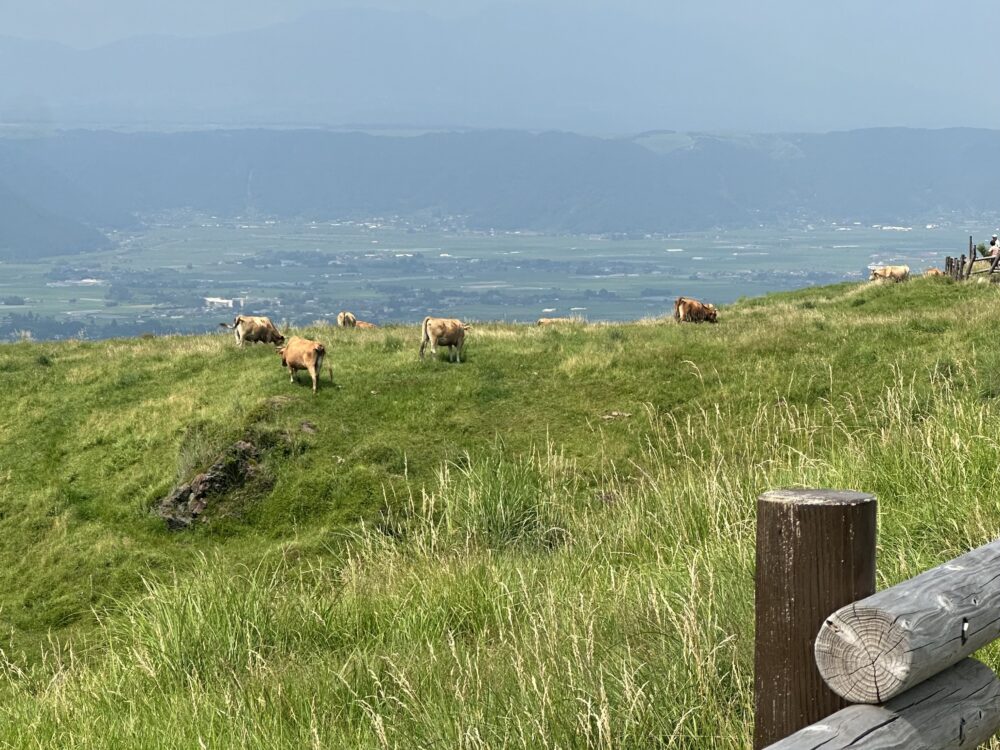
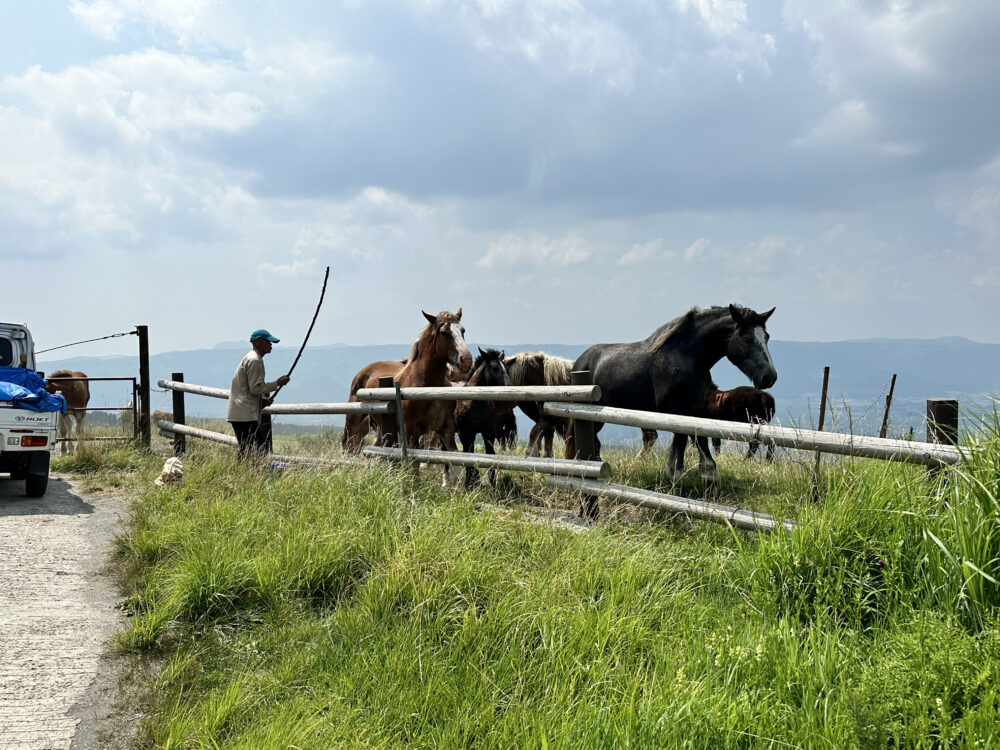
One of the sights we passed en route was Komezuka (米塚), a small volcanic hill shaped like an overturned rice bowl. It’s a famous landmark in Aso. Although hiking is no longer allowed due to past damage to the grassland, you can get a great view of it from the right side of the bus when heading uphill.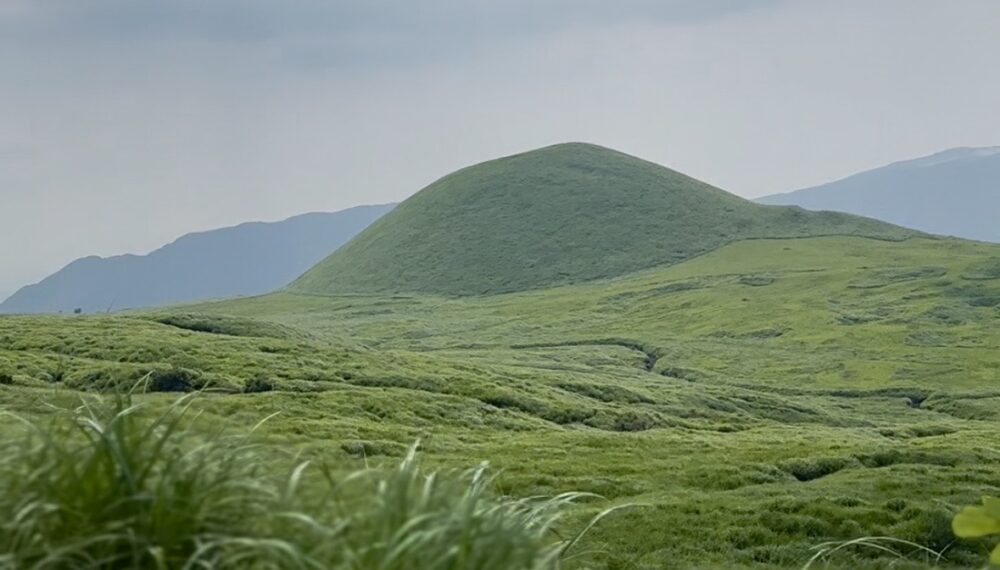
When we arrived at Kusasenri Plateau, we were surprised by how accessible it is—the main photo spot is located right next to the parking are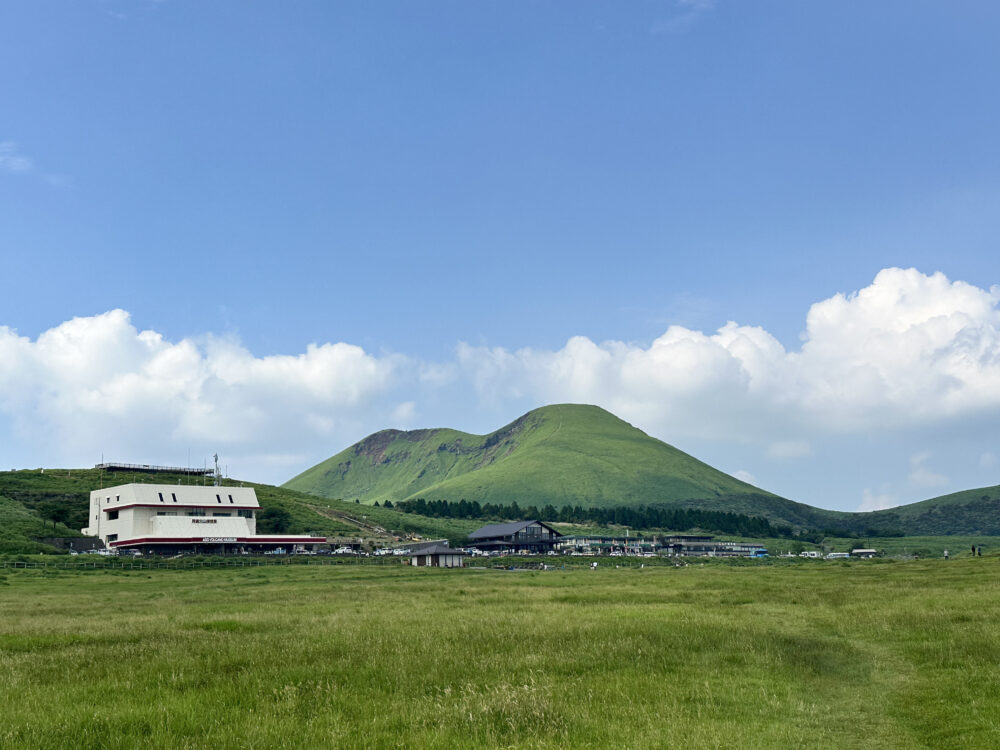
The plateau offers panoramic views of Mount Aso’s active volcanic crater, often with plumes of smoke visible from a distance. You can even smell the volcano—an unmistakable scent of sulfur and iron fills the air. Some people describe the sensation as “tasting the volcano,” while others may feel slightly dizzy or unwell due to the gases when they get closer to the active volcano. 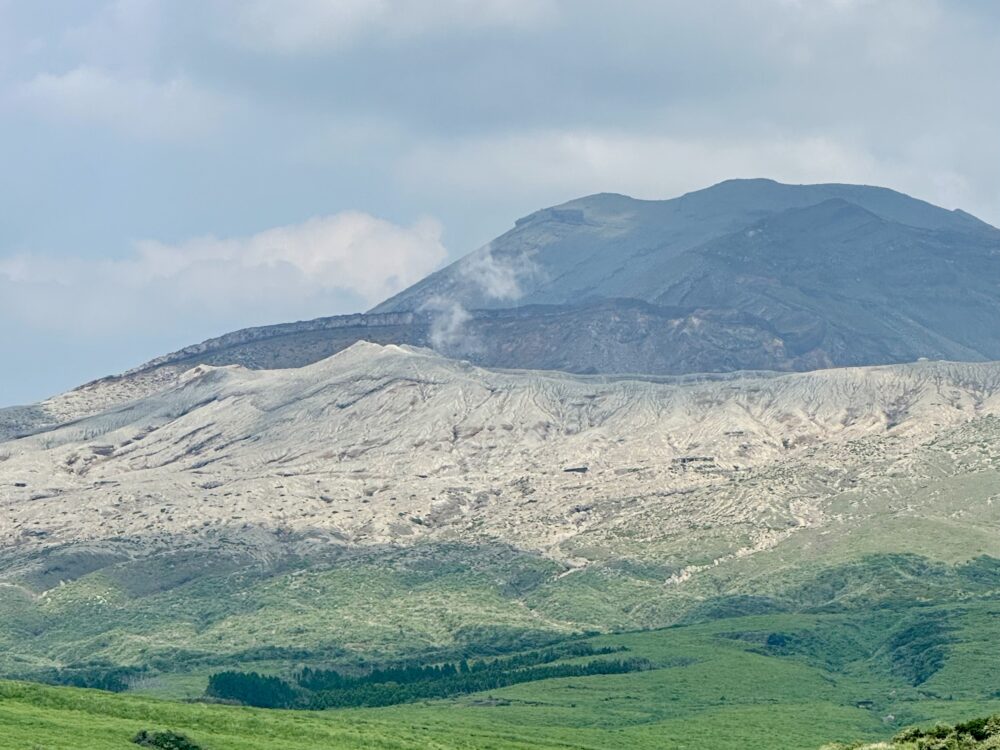
Kusasenri is peaceful and open, perfect for walking and enjoying the natural surroundings. There are horse riding experiences available, and we happened to catch the horses during their grazing break.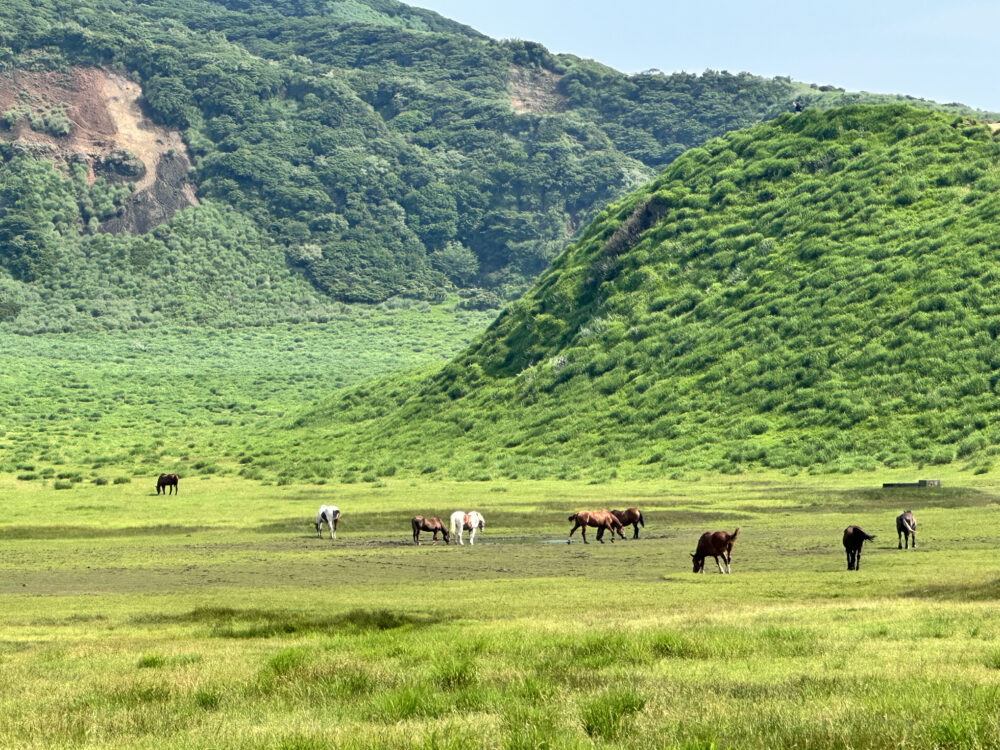
The area also features the Aso Volcano Museum, souvenir shops, restaurants, and a popular local café called Kusasenri Coffee Roastery, which brews coffee using Aso’s fresh spring water. Unfortunately, it was already closed when we arrived, but the Aso IP at the entrance was adorable!
In the distance, you can spot Mount Kishimadake and Mount Eboshi, two peaks that we plan to climb in the coming days.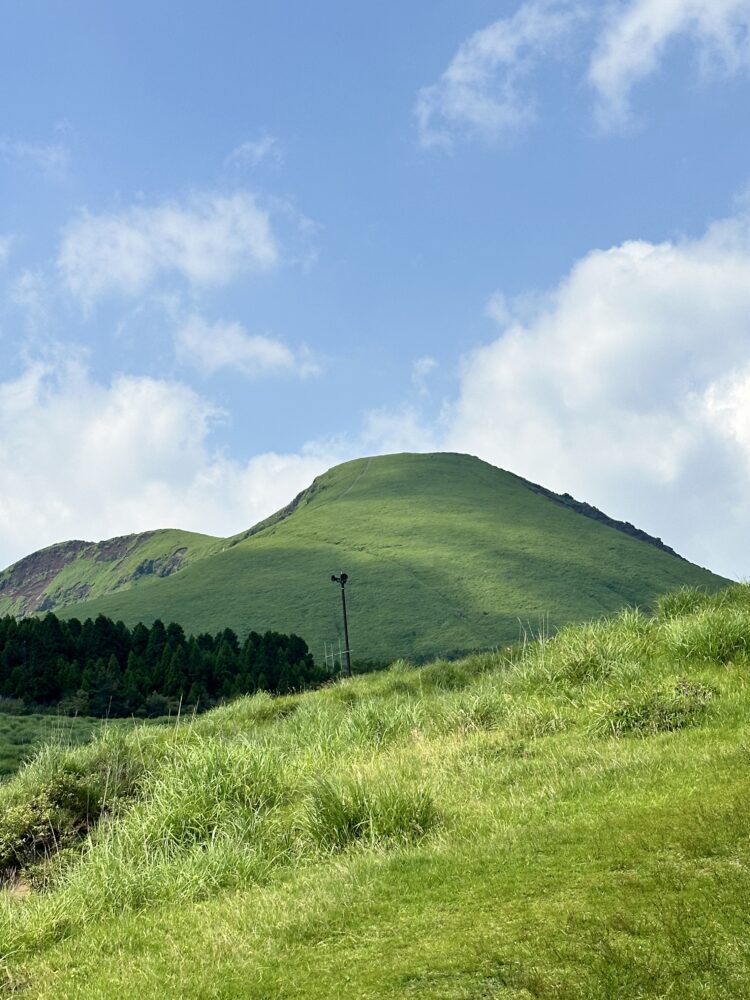
Due to a relatively dry season this year, Kusasenri’s usually reflective lake had mostly dried up when we visited, leaving behind cracked mud instead of water.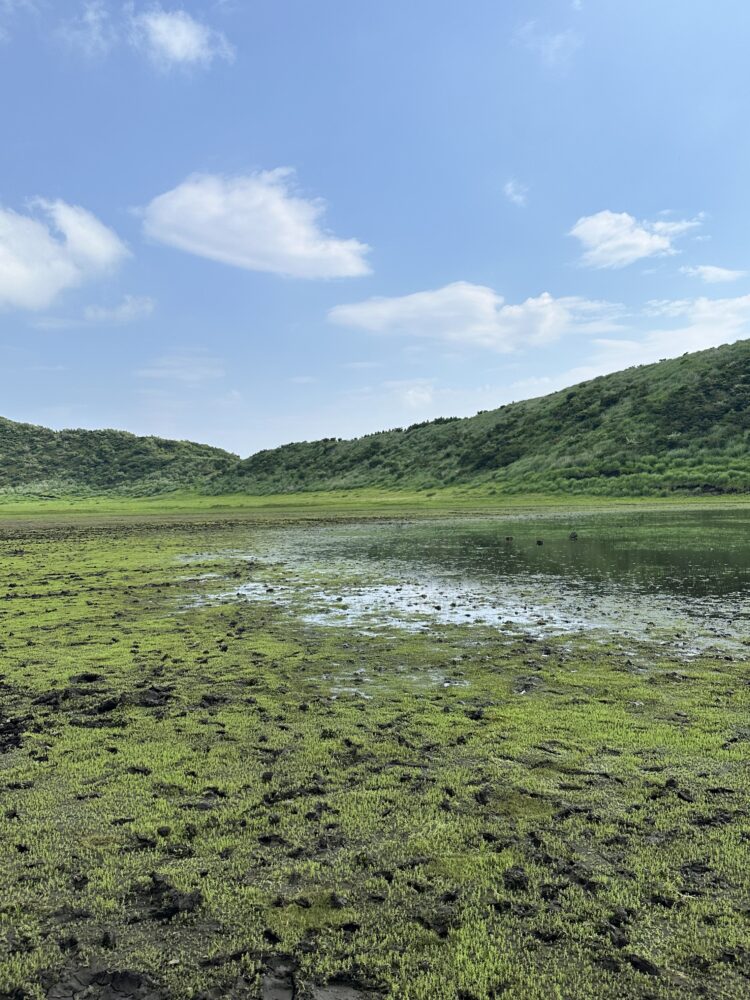
The flowers and grasses in Kusasenri change with the seasons. Here’s a glimpse of what it looks like in summer.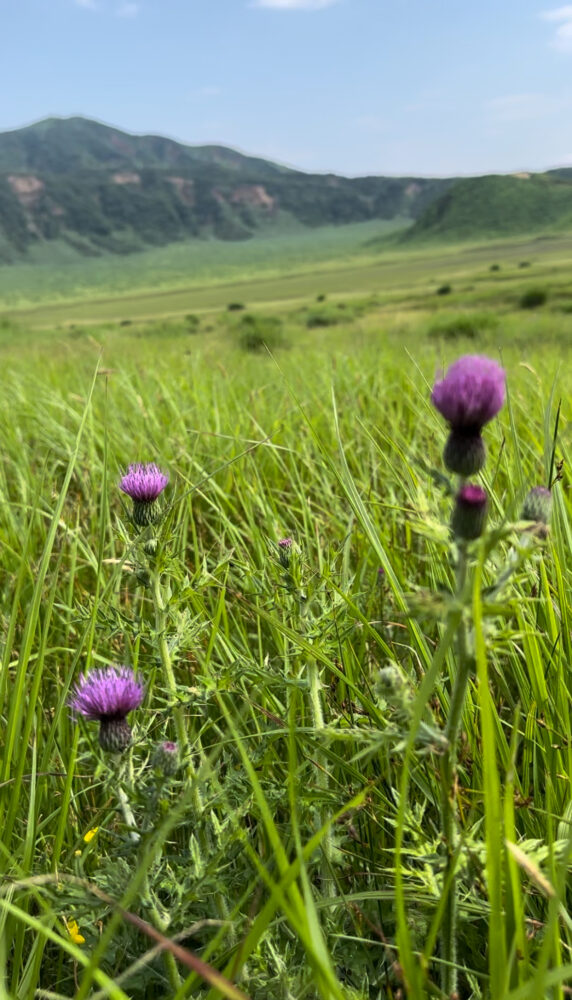
🐴🐴🐴🐴🐴🐴🐴🐴🐴🐴🐴🐴🐴🐴🐴🐴🐴🐴🐴🐴🐴🐴🐴🐴🐴🐴🐴🐴🐴🐴🐴🐴🐴🐴🐴🐴🐴🐴🐴🐴🐴🐴🐴🐴🐴
~~~~~~~~~~~~~~~~~~~~~~~~~~~~~~~~~~~~~~~~~~
Caution from Aso-city: Keep a safe distance from grazing horses!
For your safety at Kusasenri, we have established the following rules.
1.Do not approach grazing horses.
2.Avoid sudden movements and loud noises near the grazing horses.
3.Do not feed grazing horses.
To ensure your safety and the well-being of the horses, please follow these rules.
Thank you for your cooperation.
~~~~~~~~~~~~~~~~~~~~~~~~~~~~~~~~~~~~~~~~~~

